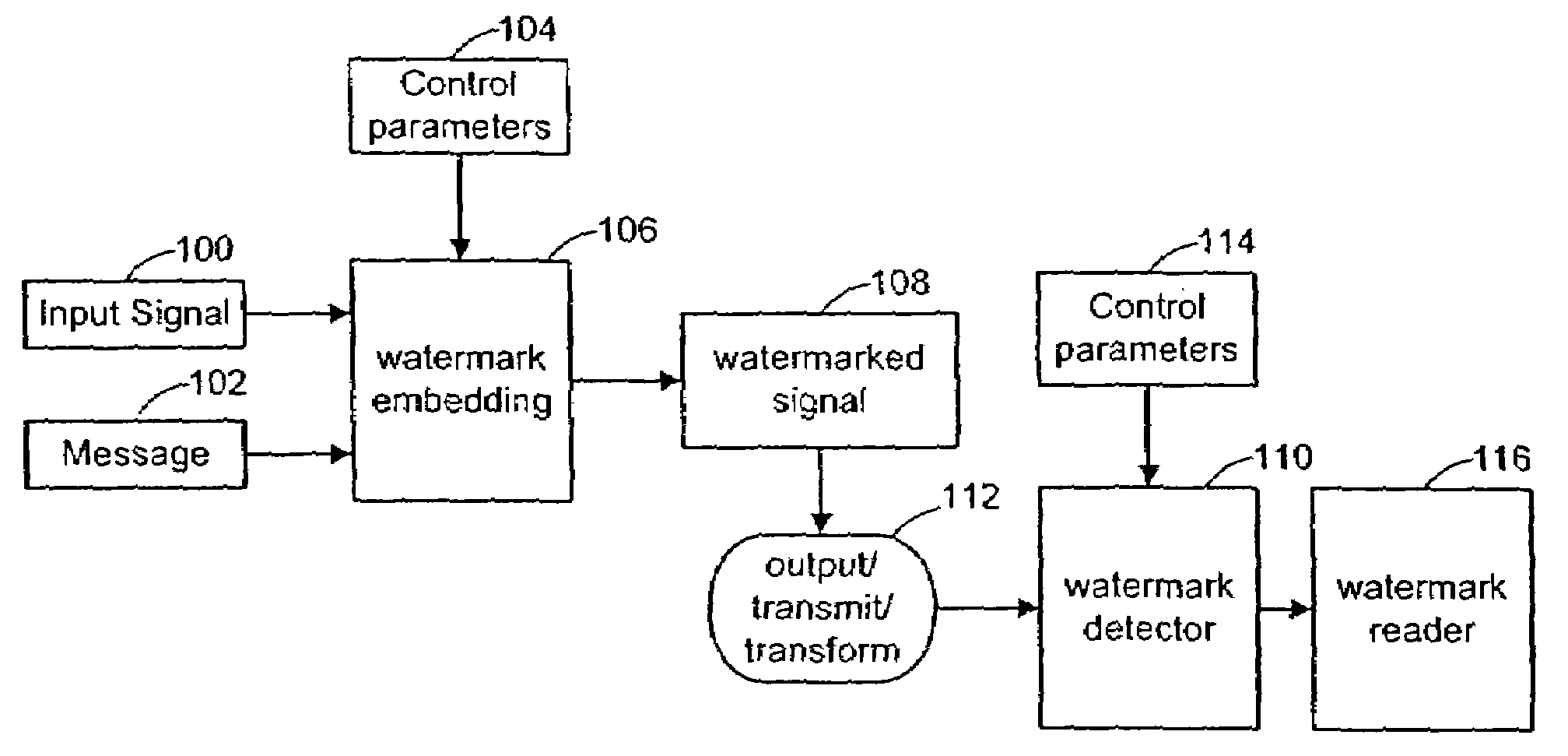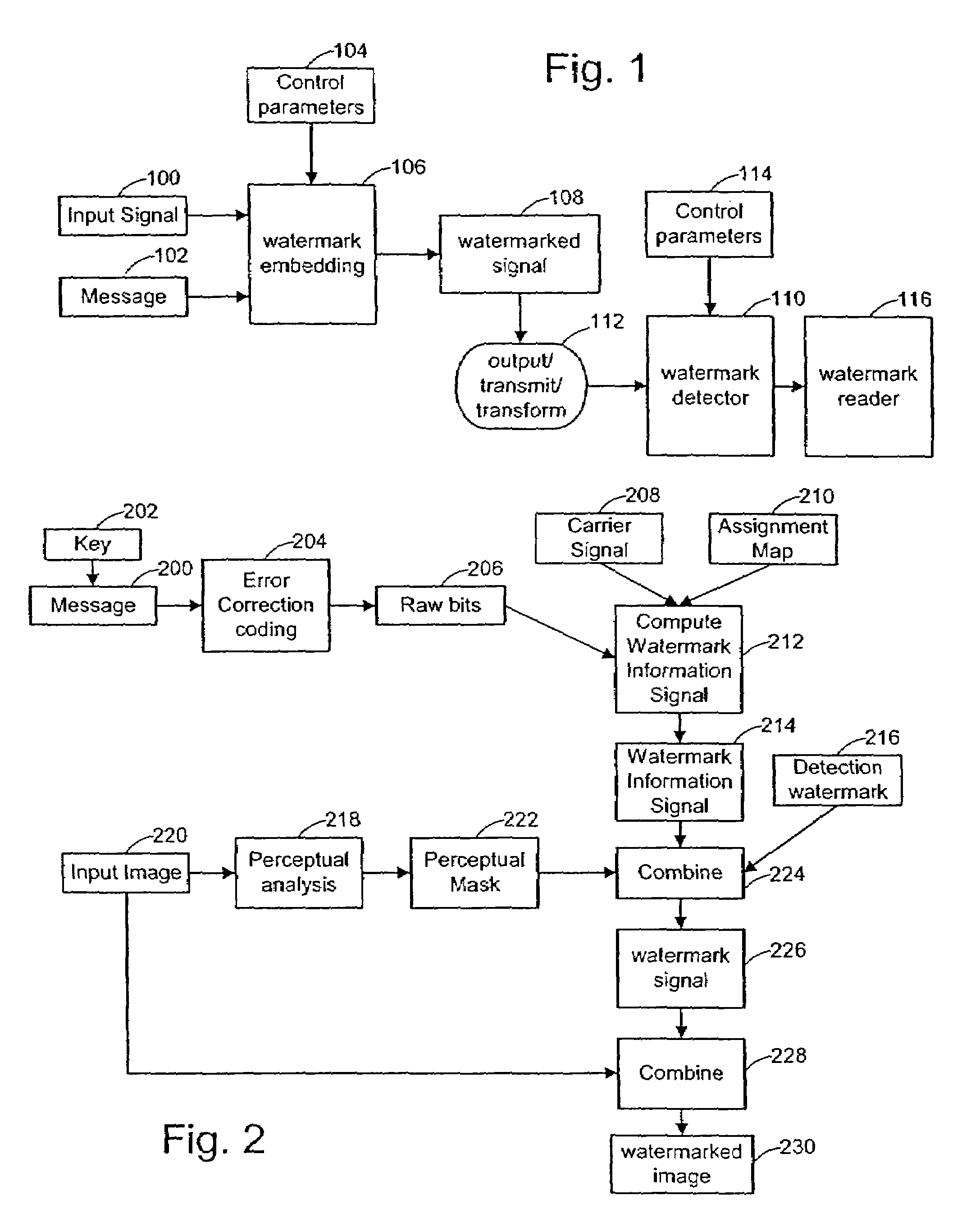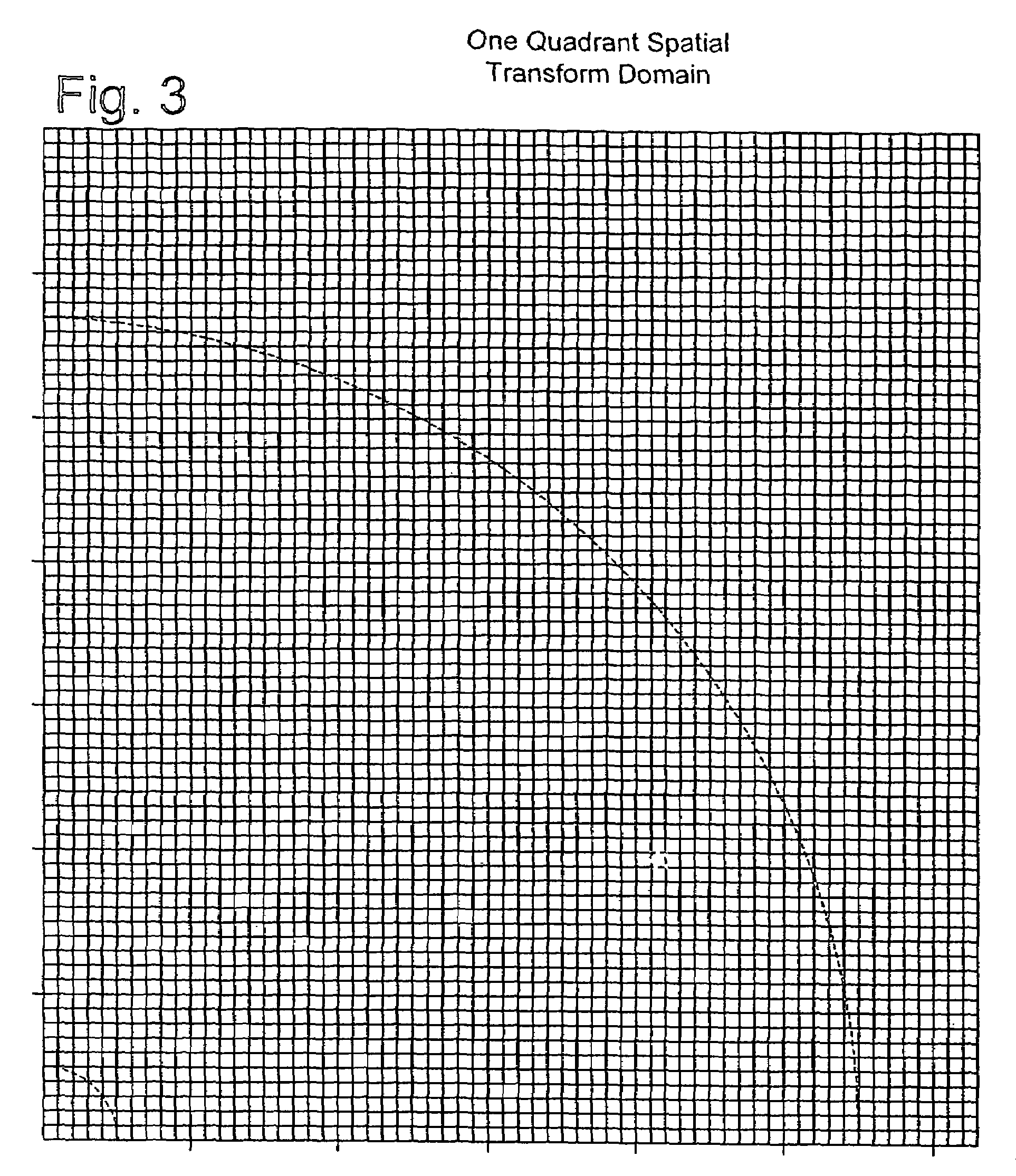Authentication of identification documents using digital watermarks
a technology of identification documents and watermarks, applied in the field of authentication, can solve the problems of watermarks being more fragile than others, and affecting the authenticity of identification documents
- Summary
- Abstract
- Description
- Claims
- Application Information
AI Technical Summary
Problems solved by technology
Method used
Image
Examples
Embodiment Construction
1.0 Introduction
[0042]A watermark can be viewed as an information signal that is embedded in a host signal, such as an image, audio, or some other media content. Watermarking systems based on the following detailed description may include the following components: 1) An embedder that inserts a watermark signal in the host signal to form a combined signal; 2) A detector that determines the presence and orientation of a watermark in a potentially corrupted version of the combined signal; and 3) A reader that extracts a watermark message from the combined signal. In some implementations, the detector and reader are combined.
[0043]The structure and complexity of the watermark signal can vary significantly, depending on the application. For example, the watermark may be comprised of one or more signal components, each defined in the same or different domains. Each component may perform one or more functions. Two primary functions include acting as an identifier to facilitate detection an...
PUM
 Login to View More
Login to View More Abstract
Description
Claims
Application Information
 Login to View More
Login to View More - R&D
- Intellectual Property
- Life Sciences
- Materials
- Tech Scout
- Unparalleled Data Quality
- Higher Quality Content
- 60% Fewer Hallucinations
Browse by: Latest US Patents, China's latest patents, Technical Efficacy Thesaurus, Application Domain, Technology Topic, Popular Technical Reports.
© 2025 PatSnap. All rights reserved.Legal|Privacy policy|Modern Slavery Act Transparency Statement|Sitemap|About US| Contact US: help@patsnap.com



